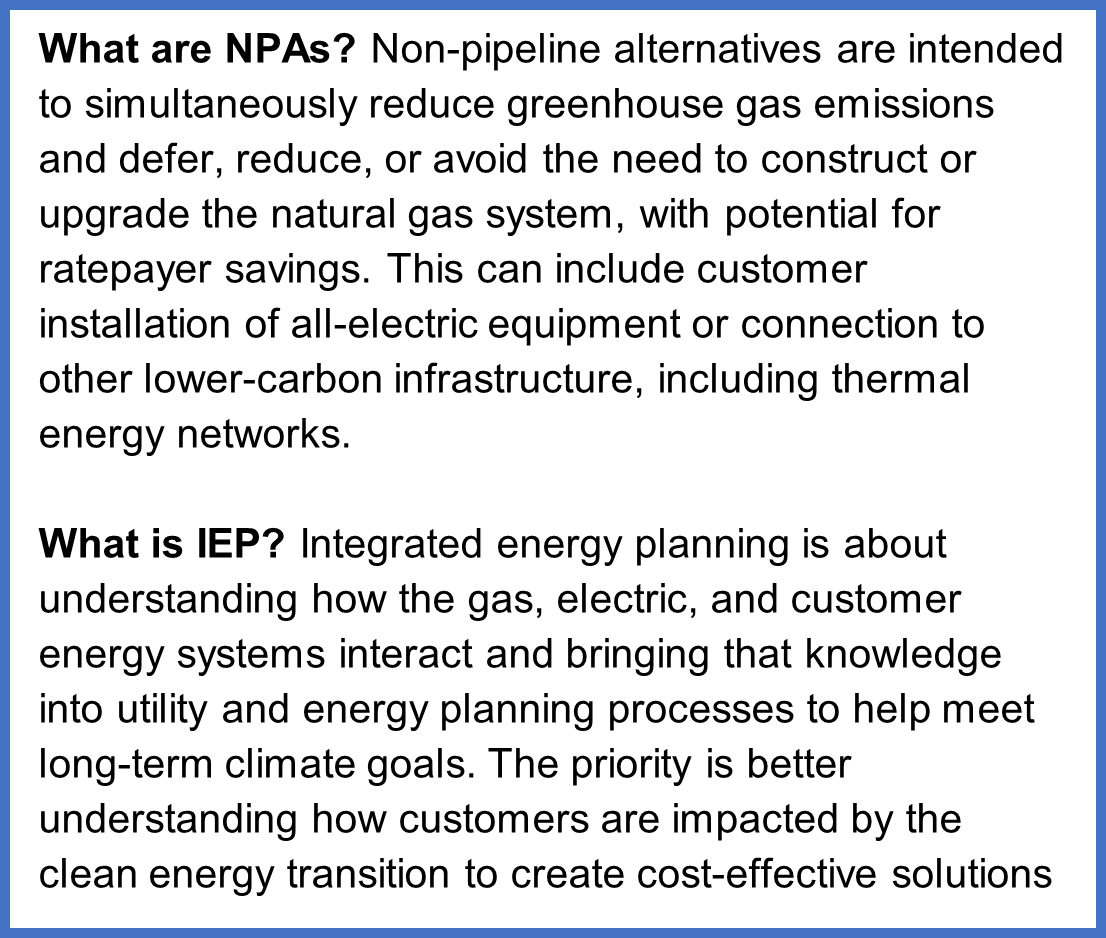National Grid and RMI Examine Role of Non-pipeline Alternatives in the Energy Transition
Categories:

Integrated energy planning will be key to achieving climate goals cost-effectively and equitably, National Grid and RMI study finds
Utilities and regulators are planning for a future less reliant on fossil gas and more dependent on clean energy resources. Integrated energy planning (IEP) and non-pipeline alternatives (NPAs) are solutions designed to help reach that future.
National Grid and RMI have analyzed nine NPA case studies from the U.S. and Europe to better understand how they have been most effectively implemented and the challenges to scaling up these projects as part of the clean energy transition.

The study examined several projects, including National Grid’s effort to transition some upstate New York customers to geothermal heating systems, California utility PG&E’s work to decommission 22 miles of gas transmission pipe by converting customers from gas, and - in Europe - the decommissioning entire neighborhoods off the gas system over a period of 10 years.
The findings in this report provide high-level insights that can help guide policymakers and regulators in navigating the transition from fossil fuels to clean electrification. There is no one-size-fits all solution and it’s critical that utilities, regulators and policymakers continue to engage customers to find pathways to decarbonization that are responsive to each community’s unique needs and leave no one behind in this transition.
The case studies reveal the benefits and the challenges regulators and utilities must carefully balance.
There are eight key findings:
1. Current NPA projects reflect diverse energy policy goals and energy system characteristics, necessitating unique solutions to meet each jurisdiction’s energy needs.
2. There’s no one-size-fits-all cost-benefit analysis for utilities to apply to NPAs to analyze impacts on consumers, on meeting emissions goals, and on achieving other societal goals.
3. There’s a range of criteria to weigh when prioritizing NPAs, including gas asset risk and hydraulic feasibility, electric capacity, benefit-cost criteria, customer propensity for new technology adoption, and community factors.
4. NPA projects can be funded through a series of different sources while protecting ratepayers’ long-term affordability, including federal, state, and local funding, and electric and gas rates.
5. To conduct IEP that achieves net-zero goals as cost-effectively and equitably as possible, regulatory support is needed to enable cross-utility data sharing and decision-making, and to invest in new tools and capabilities.
6. Utility and municipality partnership may be a key element of NPA projects and localized IEP to ensure alignment, build community support, and incorporate local priorities in project planning.
7. Individual customer persuasion to reach 100% participation is not a scalable NPA strategy.
8. Policy change will be needed to evolve the utility business model and obligation to serve, while retaining the opportunity for cost recovery as part of a transition away from gas.
About National Grid
National Grid (NYSE: NGG) is an electricity, natural gas, and clean energy delivery company serving more than 20 million people through our networks in New York and Massachusetts. National Grid is focused on building a smarter, stronger, cleaner energy future — transforming our networks with more reliable and resilient energy solutions to meet state climate goals and reduce greenhouse gas emissions.
Media Contacts
Related News
